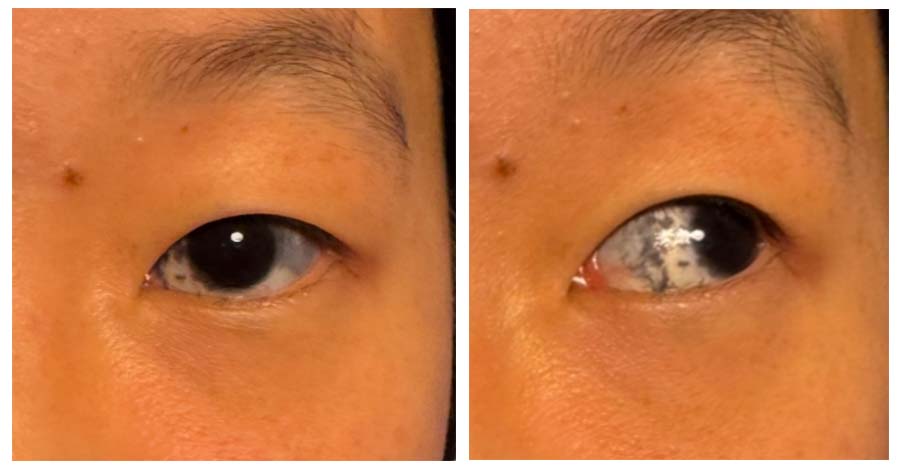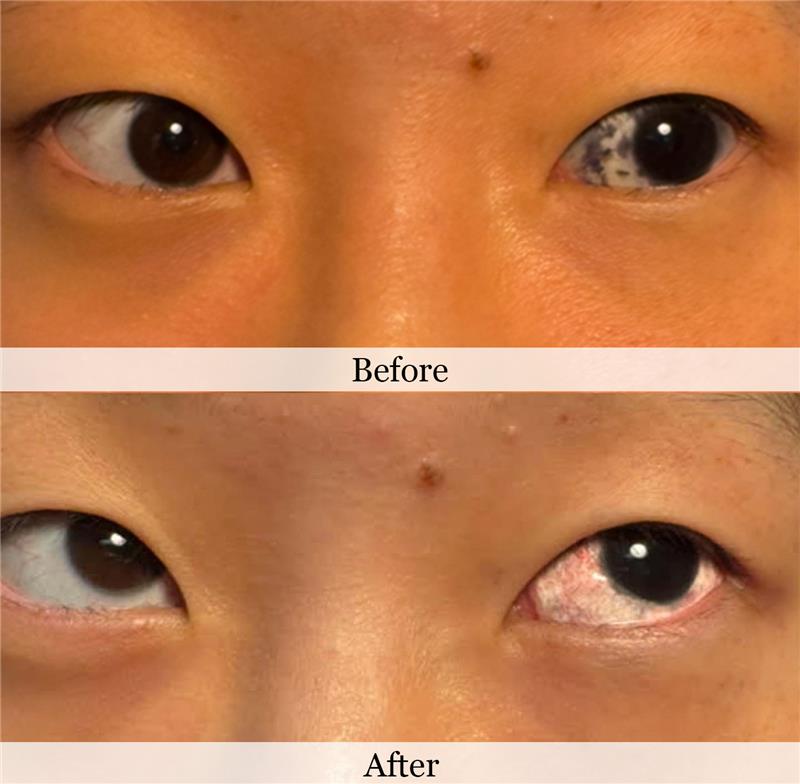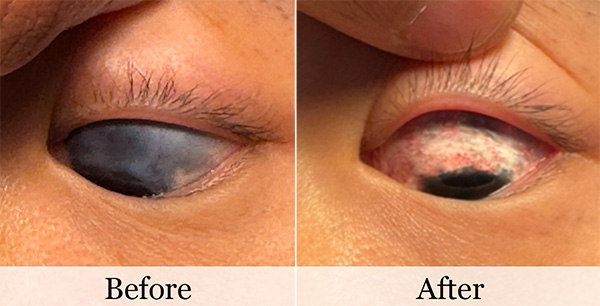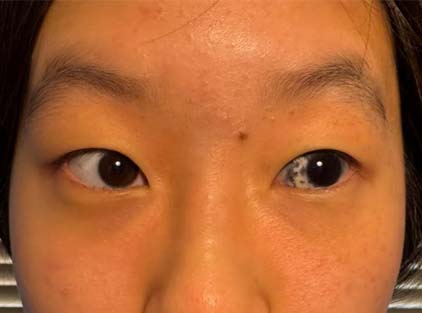Doctor Soroudi is the first surgeon in the world who has discovered how to successfully improve the appearance of eyes in people suffering from a Nevus Ota!
Thanks to revolutionary advances in bio chrome pigment technology, combined with Dr. Sorodi's expertise in conjunctival surgery & ocular surface reconstruction, Dr. Soroudi is the first specialist in the world who discovered a method where he covers the unsightly scleral pigment with a biocompatible custom-made biochrome dye.









